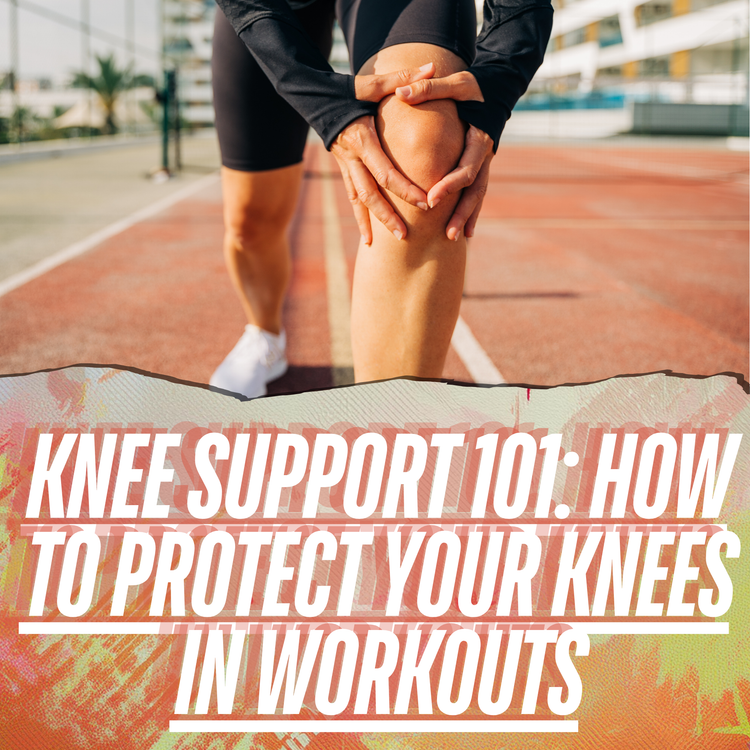Knee Support 101: How to Protect Your Knees During Home Workouts

When it comes to home workouts, making sure you have the right knee support can really help your fitness progress. Knee support is essential not only for enhancing performance but also for preventing injuries that could slow down your progress. In this guide, we'll explore the various types of knee support devices, their benefits, and how they can be integrated into your home workout routine. You'll also learn about good posture practices and physical therapy techniques that complement the use of knee support devices.
Understanding Knee Support Devices
Knee support devices come in various forms, each designed to help in different ways. Understanding these can help you choose the right support for your needs. Here's a breakdown of common knee support devices:
- Knee Braces: These provide stability and support, especially beneficial for those recovering from injuries or looking to prevent them. They come in different types, such as knee braces with side supports and ones that support the kneecap, each giving different support.
- Knee Wraps: Often used in weightlifting, knee wraps for squats help improve performance by providing compression and support during heavy lifts, reducing strain on the knees.
Choosing the right knee brace is crucial for effective support. For more detailed guidance on selecting the appropriate knee brace, consider visiting How to Choose the Right Knee Brace | McDavid.
Benefits of Using Knee Braces and Wraps
Using knee braces and wraps in your workouts can have many benefits:
- Enhanced Stability: Knee braces with side stabilizers offer extra support during lateral movements, reducing the risk of injury.
- Improved Performance: Knee wraps for squats can help you lift heavier weights by providing compression and support.
- Injury Prevention: Using the right knee support can help prevent injuries by stabilizing the joint and reducing stress. For more on injury prevention, visit Ergo-ology's insights on knee injury prevention.
To make sure you are using your knee support well, follow these tips:
- Ensure a snug fit without cutting off circulation.
- Follow the manufacturer’s instructions for proper placement and adjustment.
- Use knee supports during exercises such as squats, lunges, and any high-impact activities.
- Consult with a healthcare professional if you're unsure about the right type of support for your needs.
Physical Therapy and Knee Support
While knee braces and wraps provide excellent support, using them with physical therapy can make them work better. Physical therapy focuses on strengthening the muscles around the knee, improving flexibility, and addressing any underlying issues that might contribute to knee pain.
Physical therapists can customize exercises for you, ensuring a holistic approach to knee health. This not only complements the use of knee support devices but also helps in long-term recovery and prevention of future injuries.
For further insights into how physical therapy plays a crucial role in managing knee pain, visit this article on Physical therapy's role in addressing knee pain.
Ergonomic Practices for Knee Safety
When it comes to protecting your knees during workouts, using good posture and the right knee support is important. Here’s how you can ensure your knees are safe and sound:
- Maintain Proper Form: Always focus on your form during exercises. Incorrect posture can lead to undue stress on your knees.
- Use Appropriate Footwear: Wearing shoes that provide good support can help reduce the impact on your knees.
- Warm Up Thoroughly: A good warm-up prepares your muscles and joints, reducing the risk of injury.
- Listen to Your Body: If you feel any discomfort in your knees, stop and assess your form and equipment use.
By integrating these ergonomic practices with devices like knee braces and wraps, you can significantly lower the risk of knee injuries. For more tips on preventing knee injuries, explore the insights provided by Ergonomics Specialists.
Conclusion and Next Steps
Keeping your knees safe while working out at home is essential for keeping up with your fitness goals. By understanding and using the right knee support devices, integrating physical therapy, and adopting ergonomic practices, you can protect your knees and improve how you work out. For more tips and equipment to boost your home workouts, explore Living.Fit's range of resistance bands and exercise sliders. Visit our website for more fitness advice and to discover our selection of high-quality fitness equipment.




